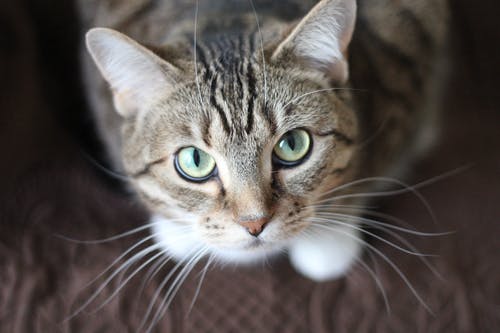Hyperthyroidism in cats is one of the most common endocrine disorders seen by veterinarians. According to statistics, it occurs in about 10 percent of cat patients over ten years old. The chances of developing the disease increase as cats get older.
What Is Hyperthyroidism in Cats?
An overproduction of the hormone thyroxine causes hyperthyroidism in the thyroid gland. Cats typically have two thyroid glands on each side of their neck. In hyperthyroidism, there is an excess of circulating thyroxine in the blood. This increases the body’s metabolism, which can stress the heart, digestive tract, and other organs.
There are some cases when two thyroid glands are affected. However, in most cases, only one thyroid gland is enlarged while the other remains normal in size.
Symptoms of Hyperthyroidism in Cats
The symptoms of hyperthyroidism vary depending on how advanced the disease is and how well a cat’s organs are functioning. But some of the most common symptoms include:
Loss of appetite
- Weight loss
- Increased thirst and urination
- Hyperactivity or restlessness
- Vomiting
- Diarrhea
- Increased heart rate
- Hypertension (high blood pressure)
How Is Hyperthyroidism Diagnosed in Cats?
A veterinary radiologist will take x-rays of your cat’s neck to look for an enlarged thyroid gland. An abdominal ultrasound can also be used to evaluate the size of the thyroid gland(s).
A fine needle aspirate (FNA) of the thyroid gland may be recommended in some cases. This is a procedure where a thin needle is inserted into the thyroid gland to collect cells for examination under a microscope. Blood tests are often done to measure levels of circulating thyroxine.
Treatment Options for Hyperthyroidism in Cats
Radioactive Iodine Therapy
Radioactive iodine therapy for cats is the most common treatment option for hyperthyroidism. This therapy involves giving your cat a dose of radioactive iodine, which selectively destroys the cells of the overactive thyroid gland(s).
The advantage of this therapy is that it offers a cure for hyperthyroidism in the vast majority of cases. It is also relatively safe and has very few side effects.
The downside to this therapy is that it requires your cat to stay at the hospital for several days while receiving the treatment. Additionally, this therapy is not always available, as it requires special licensing.
Surgery
Surgery is another option for treating hyperthyroidism in cats. This involves removing the overactive thyroid gland(s).
The advantage of surgery is that it can be done on an outpatient basis, meaning your cat can go home the same day. Additionally, surgery carries a low risk of complications.
The disadvantage to surgery is that it does not always offer a cure, as there is a chance that both thyroid glands may be overactive. Additionally, surgery carries a small risk of complications, such as bleeding or infection.
Medical Therapy
Medical therapy involves giving your cat medication to help control the symptoms of hyperthyroidism. The most common medication used for this purpose is methimazole, which helps block the thyroid gland’s production of thyroxine.
The advantage of medical therapy is that it can be done on an outpatient basis and does not require special licensing. Additionally, medical therapy is often less expensive than other treatment options.
The disadvantage to medical therapy is that it does not offer a cure for hyperthyroidism and requires lifelong treatment. Additionally, medical therapy can cause side effects, such as vomiting, diarrhea, and lack of appetite.
Monitoring Your Cat’s Hyperthyroidism
If your cat is being treated for hyperthyroidism, closely monitoring their progress and symptoms is essential. Your veterinarian will likely recommend regular follow-up appointments and blood tests to check thyroxine levels.
You should also watch for any changes in your cat’s behavior or appetite. If you notice any new symptoms or a worsening of existing symptoms, be sure to contact your veterinarian right away.
It’s always best to choose a vet clinic or hospital with different specialists, complete facilities, and diagnostic tests, including CT scans for dogs and cats, ultrasound for pregnant animals, dental x-rays, etc. This will help ensure that your pet receives the best possible care.
Preventing Hyperthyroidism in Cats
There is no known way to prevent hyperthyroidism in cats. However, early diagnosis and treatment are important for managing the disease and preventing complications.
Be sure to take your cat to the vet for regular checkups and blood work. This will help ensure that any problems are caught early and treated appropriately.
Additionally, avoid feeding your cat table scraps or raw fish, as these can contribute to the development of hyperthyroidism. According to a new study, cat food with fish ingredients may be associated with an increased risk of hyperthyroidism.
While there is no sure way to prevent hyperthyroidism, you can help your cat by feeding them a healthy diet and taking them for regular vet checkups.

